
Ken Elton Kesey was an American novelist, essayist and countercultural figure. He considered himself a link between the Beat Generation of the 1950s and the hippies of the 1960s.
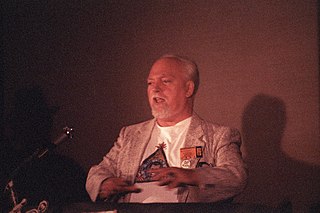
Robert Anton Wilson was an American author, futurist, psychologist, and self-described agnostic mystic. Recognized within Discordianism as an Episkopos, pope and saint, Wilson helped publicize Discordianism through his writings and interviews. In 1999 he described his work as an "attempt to break down conditioned associations, to look at the world in a new way, with many models recognized as models or maps, and no one model elevated to the truth". Wilson's goal was "to try to get people into a state of generalized agnosticism, not agnosticism about God alone but agnosticism about everything."

Thomas Kennerly Wolfe Jr. was an American author and journalist widely known for his association with New Journalism, a style of news writing and journalism developed in the 1960s and 1970s that incorporated literary techniques. Much of Wolfe's work was satirical and centred on the counterculture of the 1960s and issues related to class, social status, and the lifestyles of the economic and intellectual elites of New York City.
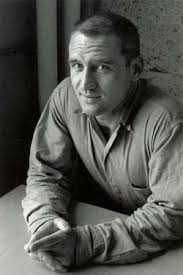
Neal Leon Cassady was a major figure of the Beat Generation of the 1950s and the psychedelic and counterculture movements of the 1960s.

Tim O'Brien is an American novelist who served as a soldier in the Vietnam War. Much of his writing is about wartime Vietnam, and his later work often explores the postwar lives of its veterans.

Larry Jeff McMurtry was an American novelist, essayist, prominent book collector, bookseller and screenwriter whose work was predominantly set in either the Old West or contemporary Texas. His novels included Horseman, Pass By (1962), The Last Picture Show (1966), and Terms of Endearment (1975), which were adapted into films. Films adapted from McMurtry's works earned 34 Oscar nominations.
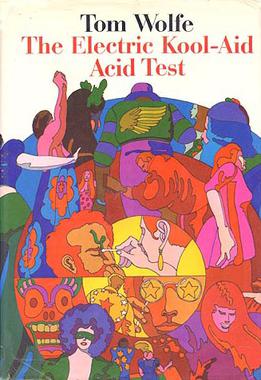
The Electric Kool-Aid Acid Test is a 1968 nonfiction book by Tom Wolfe. The book is a popular example of the New Journalism literary style. The book presents a firsthand account of the experiences of Ken Kesey and a group of psychedelic enthusiasts known as the Merry Pranksters, who traveled across the United States in a colorfully-painted school bus they called Furthur. Kesey and the Pranksters became famous for their use of psychedelic drugs to achieve expansion of their consciousness. The book chronicles the Acid Tests and encounters with notable figures of the time, and describes Kesey's exile to Mexico and his arrests.

Linda Jean Barry, known professionally as Lynda Barry, is an American cartoonist. Barry is best known for her weekly comic strip Ernie Pook's Comeek. She garnered attention with her 1988 illustrated novel The Good Times are Killing Me, about an interracial friendship between two young girls, which was adapted into a play. Her second illustrated novel, Cruddy, first appeared in 1999. Three years later she published One! Hundred! Demons!, a graphic novel she terms "autobifictionalography". What It Is (2008) is a graphic novel that is part memoir, part collage and part workbook, in which Barry instructs her readers in methods to open up their own creativity; it won the comics industry's 2009 Eisner Award for Best Reality-Based Work.
The Merry Pranksters were comrades and followers of American author Ken Kesey.

Furthur is a 1939 International Harvester school bus purchased by author Ken Kesey in 1964 to carry his "Merry Band of Pranksters" cross-country, filming their counterculture adventures as they went. The bus featured prominently in Tom Wolfe's 1968 book The Electric Kool-Aid Acid Test but, due to the chaos of the trip and editing difficulties, footage of the journey was not released as a film until the 2011 documentary Magic Trip.
Gord the Rogue is the protagonist in a series of fantasy novels and short stories written by Gary Gygax. Gygax originally wrote the novels and short stories to promote his World of Greyhawk campaign setting for the Dungeons & Dragons role-playing game. After he left TSR, Gygax continued to write Gord the Rogue novels for several years. In all of these works, the plot revolves around the adventures of a young man named Gord who rises from humble origins in the slums of a large city on the planet Oerth to become a powerful force trying to stave off the takeover of Oerth by demons.
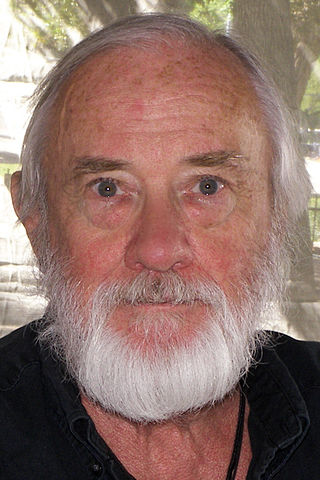
Robert Anthony Stone was an American novelist, journalist, and college professor.

Pinhead is a fictional character and the main antagonist of the Hellraiser franchise. The character first appeared as an unnamed figure in the 1986 Clive Barker novella The Hellbound Heart. When Clive Barker adapted the novella into the 1987 film Hellraiser, he referred to the character in early drafts as "the Priest" but the final film gave no name. The production and make-up crew nicknamed the character "Pinhead"—derived from his bald head studded with nails—and fans accepted the sobriquet. The name was then used in press materials, tie-in media, and on-screen in some of the film's sequels, although Barker himself despises the moniker.
Ken Babbs is a famous Merry Prankster who became one of the psychedelic leaders of the 1960s. He along with best friend and Prankster leader, Ken Kesey, wrote the book Last Go Round. Babbs is best known for his participation in the Acid Tests and on the bus Furthur.

Sailor Song is a 1992 novel written by Ken Kesey. The only work of long fiction solely written by Kesey after Sometimes a Great Notion (1964), Sailor Song depicts the lives of the residents of Kuinak, a small town in Alaska, thirty years in the future – the 2020s.

Gonzo Papers, Vol. 3: Songs of the Doomed: More Notes on the Death of the American Dream is a book by the American writer and journalist Hunter S. Thompson, originally published in 1990. This third installment of The Gonzo Papers is a chronologically arranged selection of stories, letters, journals and reporting, allowing readers to see how Thompson's brand of "new journalism," also termed Gonzo journalism, has evolved over the years. It is a collection of Dr. Thompson's essays and articles. This collection is mostly made up of pieces from the Reagan Era, but there are also some older stories, including excerpts from his unfinished first novel, "Prince Jellyfish", which is still unpublished, and The Rum Diary, which was not published on its own until 1998.
Fablehaven is a fantasy book series for children written by Brandon Mull. The book series, which includes Fablehaven, Fablehaven: Rise of the Evening Star, Fablehaven: Grip of the Shadow Plague, Fablehaven: Secrets of the Dragon Sanctuary and Fablehaven: Keys to the Demon Prison, is published by Shadow Mountain in hardcover and Simon & Schuster in paperback. It is followed by the five-part sequel series Dragonwatch.
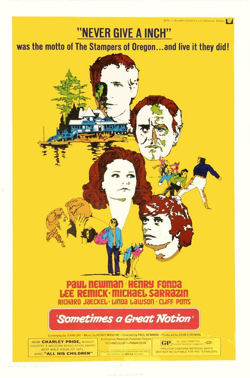
Sometimes a Great Notion is a 1971 American drama film directed by Paul Newman and starring Newman, Henry Fonda, Michael Sarrazin, and Lee Remick. The cast also includes Richard Jaeckel in an Academy Award-nominated performance.
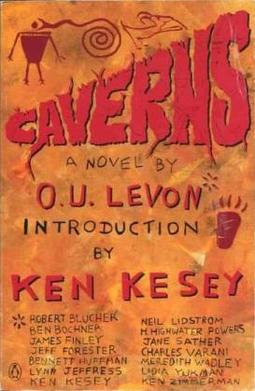
Caverns is a 1989 novel written collaboratively as an experiment by Ken Kesey and a creative writing class that he taught at the University of Oregon. The cover of the book says it was written by O.U. Levon—the name of this supposed author, spelled backwards, is "novel U.O.". The full list of authors is: Robert Blucher, Ben Bochner, James Finley, Jeff Forester, Bennett Huffman, Lynn Jeffress, Ken Kesey, Neil Lidstrom, H. Highwater Powers, Jane Sather, Charles Varani, Meredith Wadley, Lidia Yukman and Ken Zimmerman.
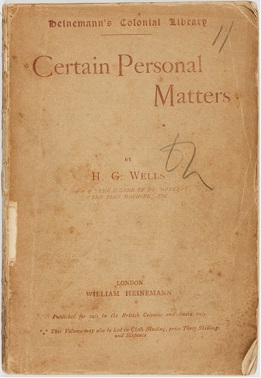
Certain Personal Matters is an 1897 collection of essays selected by H. G. Wells from among the many short essays and ephemeral pieces he had written since 1893. The book consists of thirty-nine pieces ranging from about eight hundred to two thousand words in length. A one-shilling reprint was issued in 1901 by T. Fisher Unwin.

















